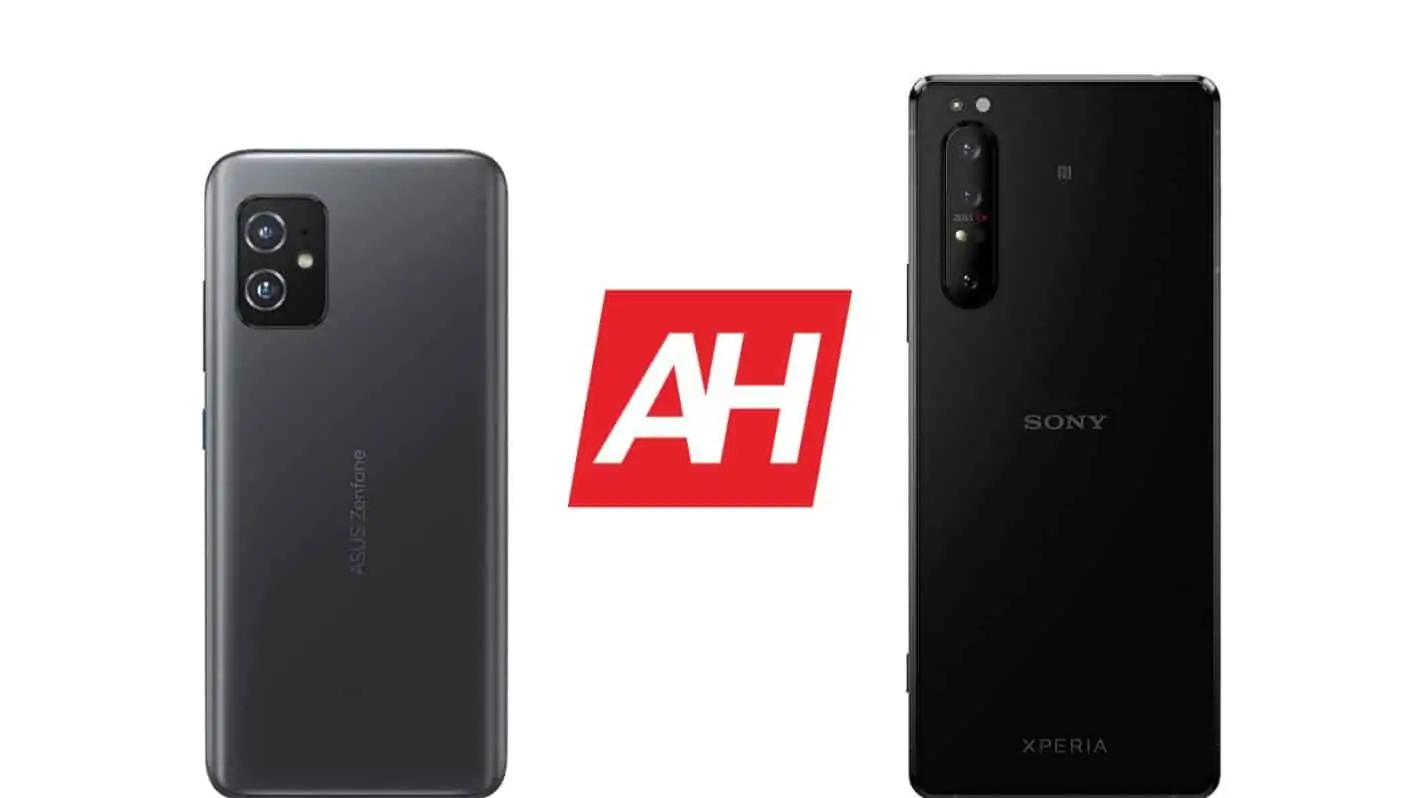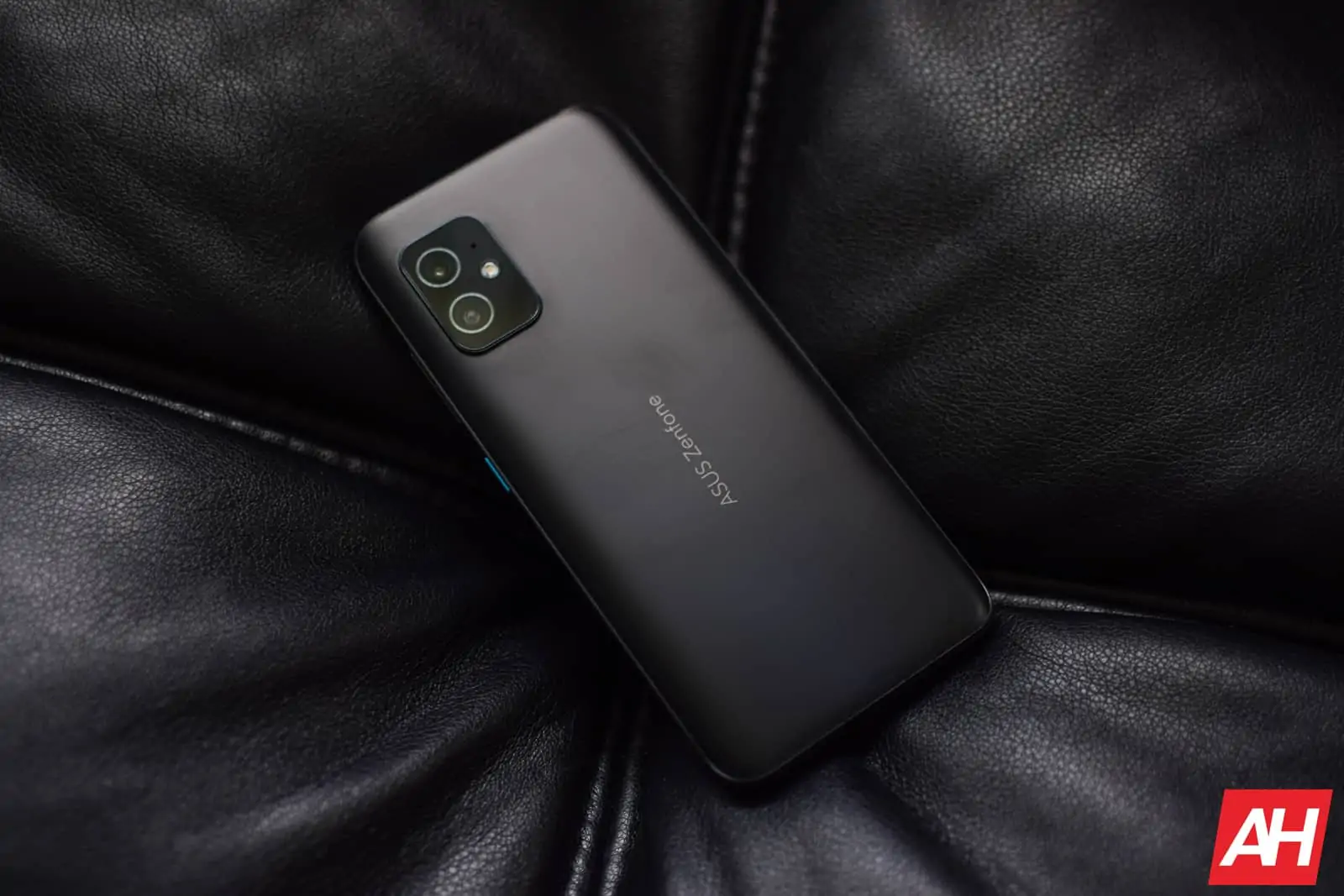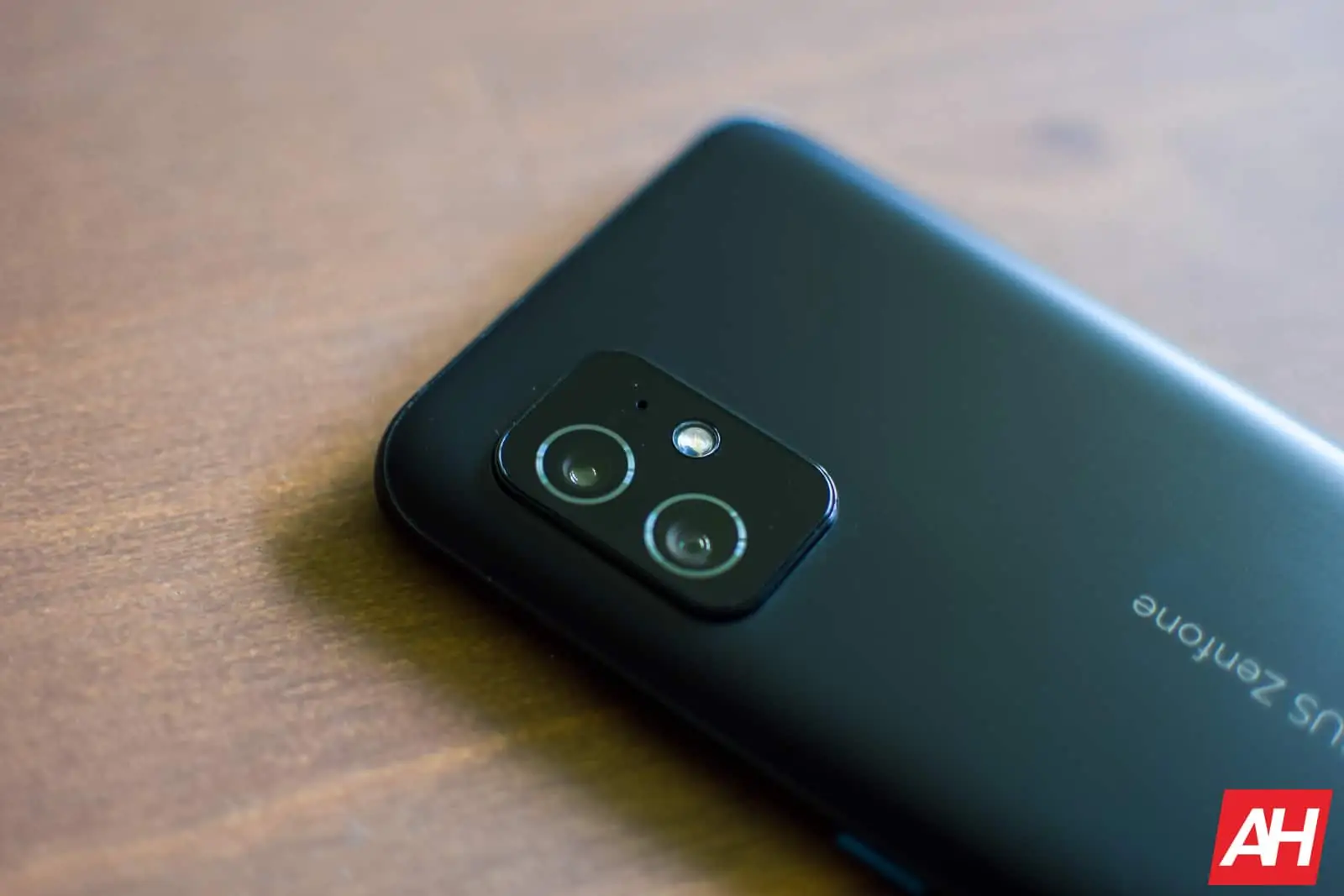In this article, we’ll compare two somewhat different smartphones, the ASUS ZenFone 8 vs Sony Xperia 1 III. The thing is, both of these phones are flagship offerings from their respective companies, and you may be undecided between them. The differences in design are easily noticeable, while the two phones are also somewhat different on the inside as well. Still, they’re both quite compelling.
It is worth noting that the Sony Xperia 1 III is a lot more expensive than the ASUS ZenFone 8, despite the fact they’re both positioned as flagship devices. Is the extra money worth it for the Xperia 1 III, though? Well, that’s something you may be able to answer following this comparison. We’ll start by comparing their specifications, and will move to a number of other sections from there. That being said, let’s compare the ASUS ZenFone 8 vs Sony Xperia 1 III.
Specs
| ASUS ZenFone 8 | Sony Xperia 1 III | |
| Screen size | 5.9-inch fullHD+ Super AMOLED flat display (120Hz refresh rate) | 6.5-inch 4K OLED flat display (120Hz refresh rate) |
| Screen resolution | 2400 x 1080 | 3840 x 1644 |
| SoC | Qualcomm Snapdragon 888 | Qualcomm Snapdragon 888 |
| RAM | 6GB/8GB/16GB | 12GB (LPDDR5) |
| Storage | 128GB/256GB (UFS 3.1); non-expandable | 256GB/512GB (UFS 3.1); expandable |
| Rear cameras | 64MP (f/1.8 aperture, 0.8um pixel size, 26mm lens, PDAF, OIS) 12MP (ultra-wide, f/2.2 aperture, 112-degree FoV, 14mm lens, 1.4um pixel size, dual pixel PDAF) |
12MP (f/1.7 aperture, wide, 1.8um pixel size, Dual Pixel PDAF, OIS) 12MP (f/2.3 aperture, 70mm telephoto, f/2.8 aperture, 105mm telephoto, Dual Pixel PDAF, 3x/4.4x optical zoom, OIS) 12MP (f/2.2 aperture, 16mm ultrawide, Dual Pixel PDAF) 0.3MP (TOF 3D, depth) |
| Front cameras | 12MP (f/2.5 aperture, 28mm lens, 1.22um pixel size, dual pixel PDAF) | 8MP (f/2.0 aperture, 1.12um pixel size, 24mm wide) |
| Battery | 4,000mAh, non-removable, 30W wired charging, reverse wired charging | 4,500mAh, non-removable, 30W wired charging, wireless charging, reverse wireless charging |
| Dimensions | 148 x 68.5 x 8.9mm | 165 x 71 x 8.2mm |
| Weight | 169 grams | 186 grams |
| Connectivity | 5G, LTE, NFC, Bluetooth 5.2, Wi-Fi, USB Type-C | 5G, LTE, NFC, Bluetooth 5.2, Wi-Fi, USB Type-C |
| Security | In-display fingerprint scanner (optical) | Side-facing fingerprint scanner |
| OS | Android 11 ZenUI 8 |
Android 11 |
| Price | €599 / €669 / €799 | $1,300 |
| Buy | ASUS | Sony |
ASUS ZenFone 8 vs Sony Xperia 1 III: Design
Both of these phones are made out of metal and glass, but they do look considerably different. The ASUS ZenFone 8 is a lot smaller than the Xperia 1 III. It’s not only a lot shorter, but it’s also noticeably narrower, and slightly thicker. It’s lighter than Sony’s offering, by almost 20 grams. That is to be expected as it also comes with a noticeably smaller display, which we’ll talk about in the next section.
The ASUS ZenFone 8 includes a display camera hole in its top-left corner, and really thin bezels. Its bottom bezel is a bit thicker than the rest of them. The Xperia 1 III sports a flat display as well, just like the ZenFone 8, but it doesn’t have a notch or a display camera hole. It does have more bezel than the ZenFone 8, though, which is to be expected as the front-facing camera has to fit somewhere. That’s actually why the phone is so tall, in addition to its tall display aspect ratio.
Their rear camera setups are placed in the same spot, in the top-left corner. Both phones are curved on the back, towards the sides. They’re both quite slippery as well, but the ZenFone 8 is much easier to use despite that, as it’s much smaller. It’s also great for one-handed use, which is not something that can be said for the Xperia 1 III, despite the fact it’s not that wide. These two phones are made for a completely different type of consumer, so it all depends on what you’re looking for in a smartphone. They are both quality devices, without a doubt.
ASUS ZenFone 8 vs Sony Xperia 1 III: Display
The ASUS ZenFone 8 includes a 5.9-inch fullHD+ (2400 x 1080) Super AMOLED display. This display offers a 120Hz refresh rate, and it does support HDR10+ content. Its peak brightness is at 1,100 nits and it’s a flat display. This panel is protected by the Gorilla Glass Victus, which is the latest and greatest protection from Corning. This panel does look great on paper, and it’s really good in real life too. More on that soon.
The Sony Xperia 1 III, on the flip side, comes with a 6.5-inch 4K (3840 x 1644) OLED display This display can project 1 billion colors, and it is a 120Hz panel as well. This panel does support HDR content, and it’s flat, just like the ZenFone 8’s panel. The display is protected by the Gorilla Glass Victus as well. Do note that the Xperia 1 III’s panel does scale back resolution to fullHD when you’re not watching 4K content, otherwise your battery would die really fast.
In regards to display quality in real-life, well, you’ll be happy with either one. The ZenFone 8’s panel does have a slight blue tint to it, but you can fix that via the display settings. Both panels offer vivid colors, and great viewing angles, while those black as are as deep as you’d expect them to be. You won’t even notice the extra sharpness on the Xperia 1 III, both of these displays are more than sharp enough for their size. You really can’t go wrong with either one, it only depends on what size you prefer more.
ASUS ZenFone 8 vs Sony Xperia 1 III: Performance
Both of these phones are flagship devices, so you’d expect flagship performance out of them, right? Well, luckily, that’s exactly what you’ll get. Both phones ship with the Snapdragon 888 SoC, which is, next to the Snapdragon 888+, the most powerful chipset from Qualcomm. In addition to that, both phones offer more than enough RAM, and really fast flash storage as well. On top of that, their software is well-optimized, and based on Android 11.
Both phones are quite snappy in pretty much every way. They open and close apps really fast, multitasking is a breeze, while they both do great when it comes to content consumption. Browsing is also on point, they launch camera apps extremely fast as well… there’s basically no lag to talk about, at all. As it’s the case with every smartphone, you may get a stutter from time to time, but no lag of any kind.
That actually goes for gaming as well. Both of these phones do great with games, and can run pretty much anything you can think of. That’s not surprising considering their hardware. One thing to note, though, is that the Xperia 1 III does get a bit warm in the process. Not only from gaming, but from general usage. It doesn’t get hot or anything, but it does get warmer than most other phones. That’s something Sony may fix with an update, we’ll see. The phone doesn’t get uncomfortably warm or anything of the sort.
ASUS ZenFone 8 vs Sony Xperia 1 III: Battery
The ASUS ZenFone 8 includes a 4,000mAh battery on the inside. The Sony Xperia 1 III, on the other hand, comes with a 4,500mAh battery. Do note that the Xperia 1 III does have a considerably larger display, with a higher resolution. So, what does that mean for battery life, is it good on both phones? Well, it’s good, but it’s not great. The ASUS ZenFone 8 can get to (and sometimes cross) 6 hours of screen-on-time when gaming and other processor-intensive tasks are not involved.
The Xperia 1 III doesn’t do as well. It lingers around 5.5 hours of screen on time, though those numbers do go down if gaming or anything similar is included. Do note that your results may be different, and that Sony will likely be pushing out optimization updates soon. That could change things drastically for the device, as it could boost its battery life quite a bit. All in all, both phones are passable in regards to battery life.
They are somewhat similar in the charging department. Both smartphones offer 30W fast wired charging. The Xperia 1 III also offers wireless charging, and reverse wireless charging. The ZenFone 8 can charge other devices as well, but not wirelessly, it comes with wired reverse charging. Neither of them has the fastest charging out there, but not many people will have complaints about 30W charging.
ASUS ZenFone 8 vs Sony Xperia 1 III: Cameras
In regards to cameras, both of these phones perform really well. The ZenFone 8 has two cameras on the back, while the Xperia 1 III has four. Sony’s flagship is definitely more versatile in the camera department, and it does perform better in some aspects. ASUS improved the ZenFone 8 camera a lot compared to the ZenFone 7 series, and both of these camera setups are flagship-grade.
They perform really well in good lighting. The dynamic range is great on both, as is white balance. Both camera setups can capture a lot of detail with both primary, secondary, and in Sony’s case, tertiary shooters. The foliage is represented really well on both smartphones as well. When it comes to low light, the ZenFone 8 is able to pull out more details from the shadows, but other than that, both phones perform admirably.
Sony actually improved the Xperia 1 III camera quite a bit recently, so even in auto mode, it does not have issues with soft images, nor white balance, it performs really well now, flagship-grade, event. Neither of these two cameras are the best around, but they’re not far from it. No matter which phone you get, chances are you’ll be happy with the camera performance.
Audio
Both of these phones have stereo speakers, and an audio headphone jack. 3.5mm headphone jacks are not something we see often in flagship phones, and it’s nice to see that both ASUS and Sony decided to offer them. Now, in regards to audio via speakers, they both do really well. The ASUS ZenFone 8’s speakers do seem to be a bit louder to us, while they do a bit better in the lower end of the spectrum.
The sound via a good set of headphones is good on both phones. Audiophiles may have a complaint or two, but for the vast majority of people, this will be more than good enough. Both phones offer really good, detailed sound, with good bass. We really don’t have any major complaints here.



